Reducing environmental impact one house at a time
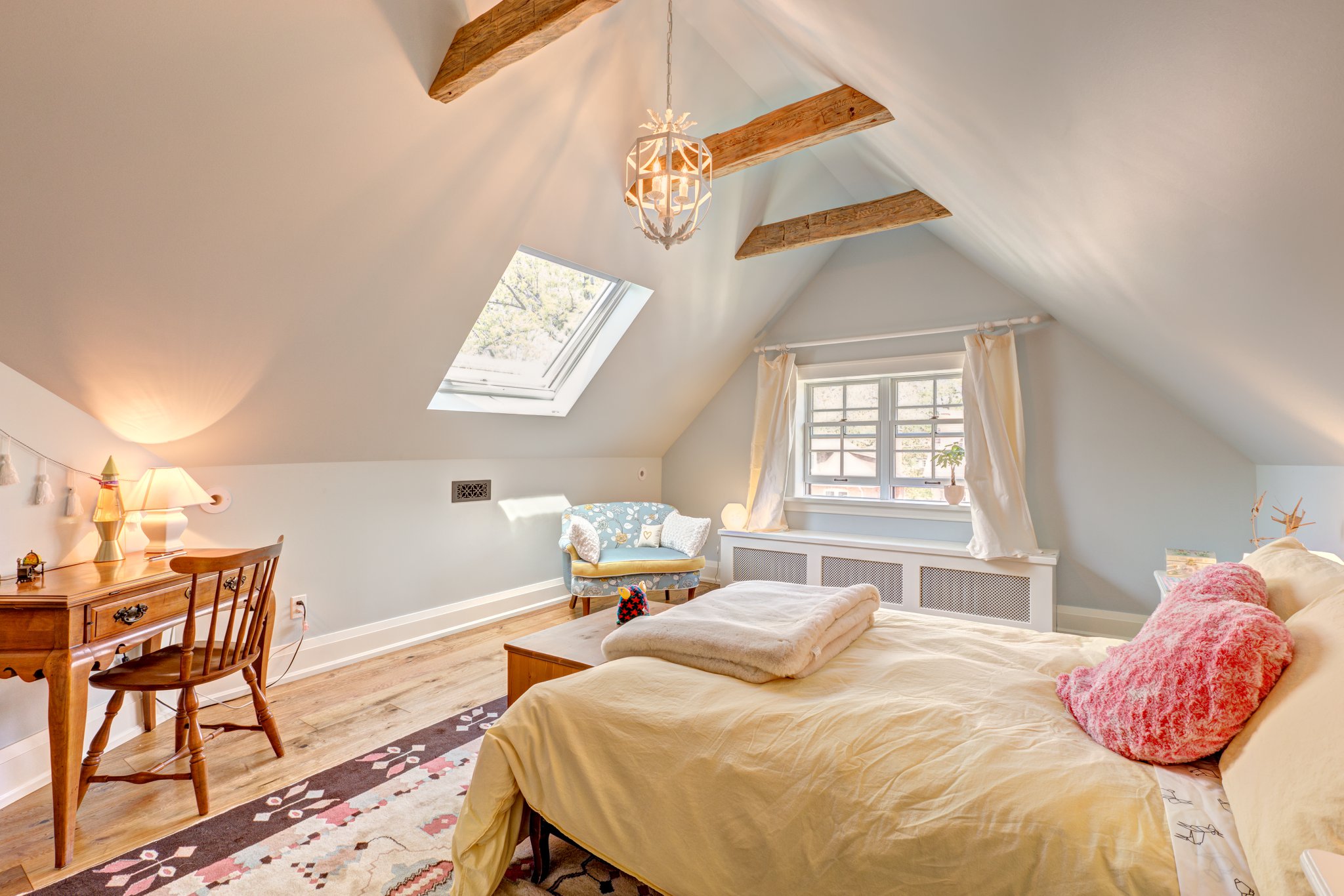
Ontario’s building sector produces 21 percent of the province’s greenhouse gases, making it the third largest contributor, next to transportation and industry.
Clearly, much needs to be done to reduce this sector’s environmental impact. Happily, in our experience, much can be done to do so, without adding that much more to a project’s budget. In fact, efforts to improve energy performance help our clients reduce their energy bills.
How do we know this? We make it a practice to quantify our low-impact efforts by monitoring diverted waste, materials used and how we travel to the project. The results are encouraging.
Take for example the 3rd floor renovation in Roncesvalles that we recently completed. The homeowner wanted to make more efficient use of the space and tackle drafts through insulation, air sealing, and balanced ventilation.
The project saved an estimated 6,597 KG of C02 compared to a typical renovation of the same size. That’s equal to the carbon that 171 trees remove from the air we breathe during their lifetime!*
While insulation and high efficiency windows reduce energy (i.e. natural gas) needed to heat and cool the home, other measures such as waste diversion and non-toxic building materials are also critical in reducing environmental impact and safeguarding occupant health.
For this project, like others, we developed a number of plans, including waste diversion, materials, resources and transportation.
Waste Diversion
The project began with the preparation of a project-specific waste minimization plan to ensure all reusable and recyclable materials were diverted from landfill. This plan is typical in all our projects, which consistently exceed LEED for Homes Canada waste management requirements.
How did we do at High Park Gardens?
- We diverted 70 percent of project waste from the landfill.
- This translates into 10.2 tonnes of diverted project waste.
- We helped the homeowners save $480 from disposal fees.

Greening Homes’ waste diversion policy.
Materials and Resources Report
Like a healthy ecosystem, a home should be built with materials that ensure the overall health of its occupants.
The first step at High Park Gardens was to assess and safely remove asbestos duct wrap and tiles by through a professional company. For other measures to safeguard indoor air quality, see Indoor Air Quality Report below.
To improve energy efficiency, we installed solar powered blackout blinds, Pella wood windows, and Rockwool products for all insulation.
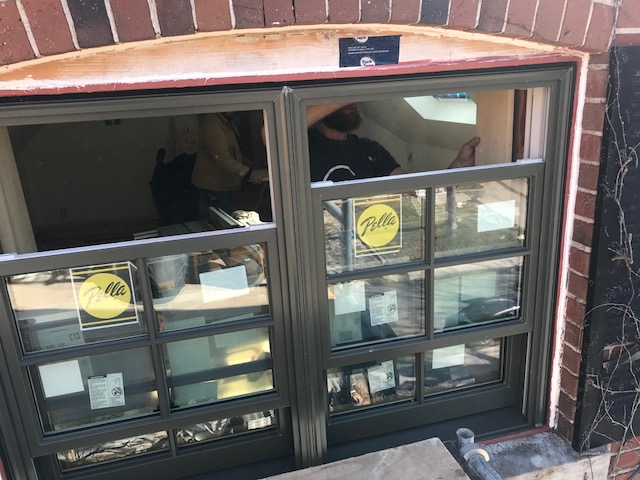
Pella Window.
ROCKWOOL is made out of rock, the world’s most abundant material, and upcycled material. It is extremely durable and handles moisture well. We used Rockwool for the roof rafters, stud cavities and against masonry walls.

Rockwool Comfortbatts R24 used between roof rafters.
We also installed ROCKWOOL SAFE’n’SOUND® in floor and partisan walls to dampen sound between floors.
We also installed the following:
- Forest Stewardship Council (FSC) certified framing material was used whenever possible.
- FSC wide plank White Oak floors with a Protego natural oil finish applied after installation.
- Reclaimed barn board collar ties installed from Rebarn.
- Reclaimed cast iron radiator – rather than electric baseboard – installed in the rear bedroom.
- Leftover flooring material used for textured bedroom nook.
- Continental Liftlite® Drywall, which is EcoLogo certified and made of 99 percent recycled content.
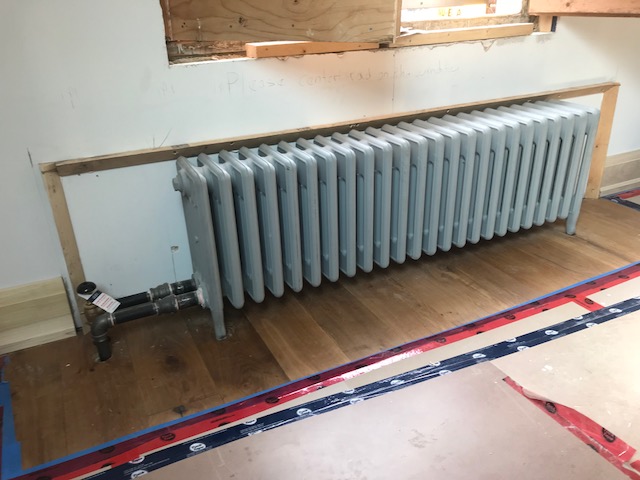
Reclaimed cast iron radiator.
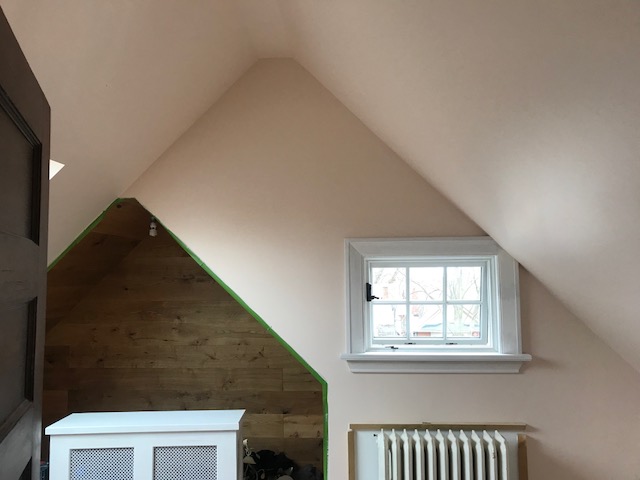
Leftover flooring material used for textured bedroom nook.
In addition to insulation and energy efficient windows, the project features smart fixtures that consume less and are more efficient with their use of electricity, gas and water than standard fixtures.
This translates into:
- $570 in estimated annual electricity cost savings.
- $5,700 total estimated savings over 10 years.
Indoor Air Quality Report
We cannot take indoor air quality for granted. After all, we spend on average 90 percent of our time indoors. It is important to minimize sources of potential indoor air pollutants and use active and passive technologies to ensure proper ventilation.
As renovations are dusty affairs, we used a HEPA air scrubber during the project to clean the air for our team and clients. To ensure fresh air ventilation for the homeowners, we installed a Vanee Energy Recovery Ventilator and ducting, and Velux venting skylights made with EnergyPlus glass.

Vanee Energy Recovery Ventilator and ducting; FSC wood framing; Intello humidity-variable vapour retarder.
We also ensured that all adhesives and caulking were nontoxic, and guarded against moisture, which usually leads to mold. Products included:
- 98 percent of all sealants and adhesives EcoLogo certified or Red List Free, including Bostik Greenforce™, a zero VOC (volatile organic compounds) glue for hardwood installation.
- No added urea formaldehyde in all products, including glues and binders.
- Benjamin Moore zero-VOC paints and primers used for walls and ceilings. Zero-VOC glues used for flooring installed.
- Prosoco’s Joint & Seam Filler and Fast Flash for air tightness around the windows.
- Intello humidity-variable vapour retarder installed everywhere with Tescon® Vana tape & Pro Clima
As a result of these combined products and application in the renovated areas, the home saw a 73 percent improvement in Indoor Air Quality.
Transportation Report
Our team’s most common method of transportation is TTC and bicycle followed by electric Smart Car. In addition to the environmental benefits, the reduced number of vehicles minimizes pressure on neighbourhood parking.
- 1 electric car. Project Manager commuted to and from site with an Electric Smart Car.
- Three site team members commuted to site by bicycle.
- Minus 133 – number of reduced combustible engine car trips to and from site by commuting by Electric Car, bicycle and TTC.
This translates into 42 percent of C02 savings (measured in kilograms) comparing our Smart Transportation measures vs. typical industry vehicle use and efficiency.

Forty percent of the world’s materials are used by the building industry. Imagine if every builder was mindful of how these materials are used and disposed of. Learn more about Greening Homes’ Core Values: greeninghomes.com/about-us/core-values/
* Carbon reduction calculations are based on the comparative assumption of a typical project using non-carbon reducing materials, spray foam, concrete, etc. Specifically, we base it on carbon data retrieved from product LCA’s and ICE data sheets, and emission equivalency data retrieved from the EPA’s Equivalencies Calculator.
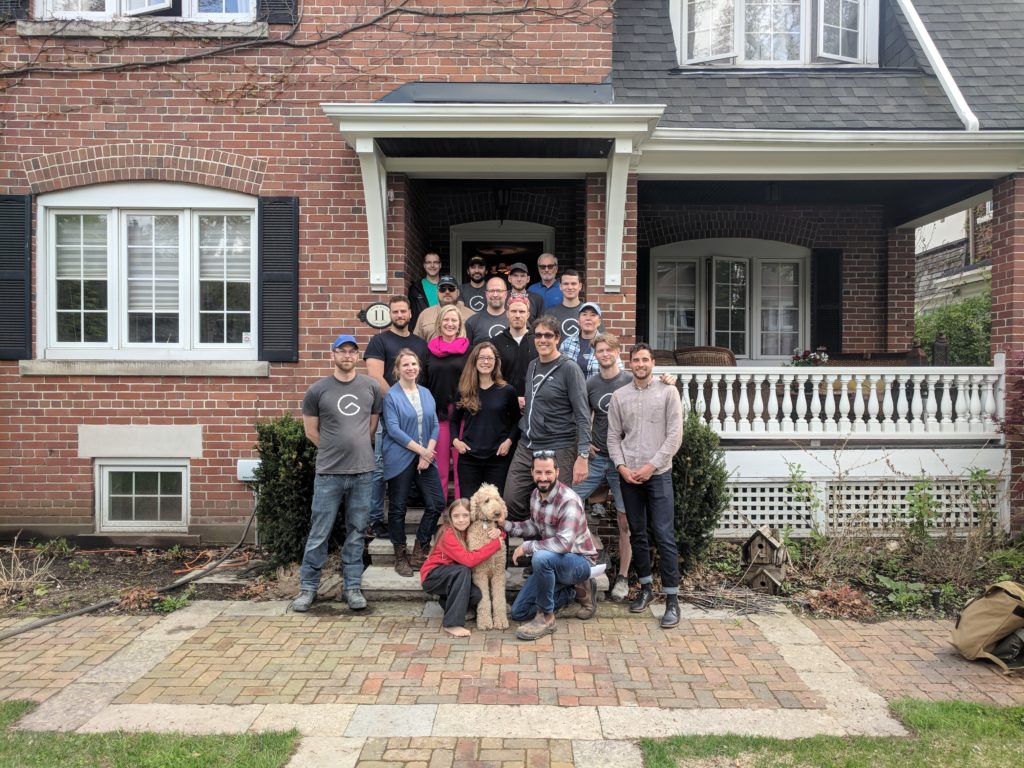
Greening Homes celebrates the finished project.